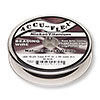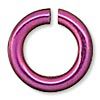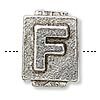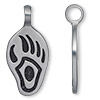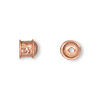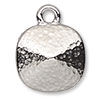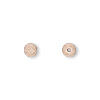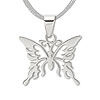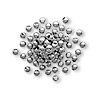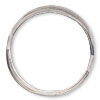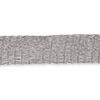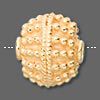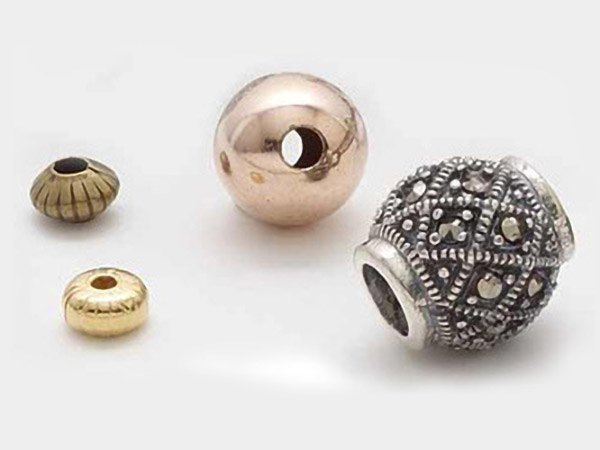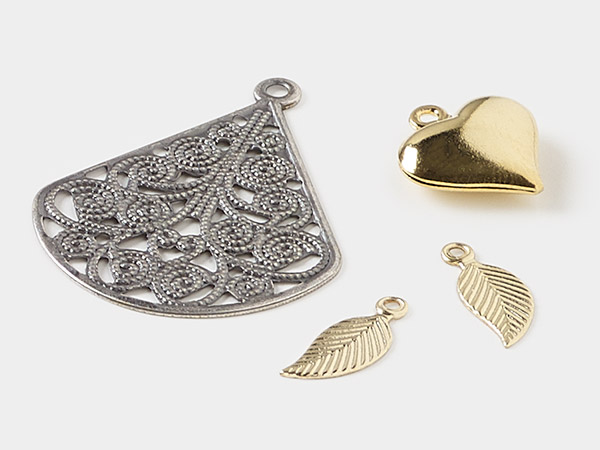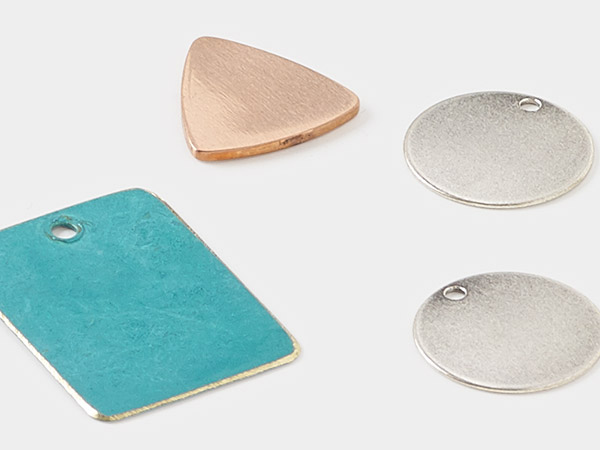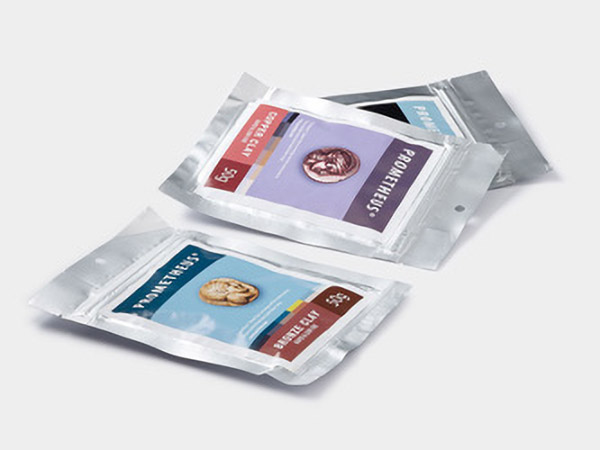Beaders' Guide to Jewelry Metals
Easy-to-read and comprehensive guide to the names and properties of the metals most commonly used in jewelry designs and components.
Aluminum - Aluminum is a pure element. Its chief ore is bauxite. It is a soft, durable, lightweight and non-magnetic metal that is easily shaped and resistant to corrosion.
Brass - is a metal alloy of copper and zinc, used for its long wear and bright, gold-like appearance much like bronze. Over time it may oxidize to a green color (patina).
Bronze - is a metal alloy of copper and tin. It frequently exhibits an antiqued golden color with traces of green.
Carbon Steel - is a type of steel that contains carbon with other alloys making up a trace portion. This term is also used generically to refer to steel that’s not stainless. Carbon steel is a tough material, but in moist environments it can oxidize or rust.
Copper - is a pure element that is often used in jewelry. The hardness of copper allows for easy manipulation, so it is great for wrapping, stamping and more. While this metal is corrosion resistant, it does form a patina with time and use. This is the green/blue color change often seen in uncoated copper.
Fine Silver - items are 99.9% silver. This more pure version of silver is softer and whiter than sterling silver. Since there is no copper used as an alloy less oxidation occurs than in sterling silver.
Finish - is a coating of metals that have been deposited on the surface of the base item. This type of coating is not as durable as plating.
Gold-Filled - items are made by combining a layer, or layers, of gold alloy to a base metal (usually brass), then rolling or drawing the metal to the desired thickness and shape. It has a long life and can be worn by most people without allergic reaction. To qualify as gold-filled an item must be at least 1/20, or 5%, gold alloy weight. The notation on gold-filled wire reflects the fineness and the percentage of the gold alloy weight. For example; 14Kt/20 means that 1/20 of the item is 14Kt gold by weight.
Gunmetal - finishes have a neutral grey background with bluish or purplish tinges, sometimes referred to as "black chrome." Its name derives from a particular alloy of copper, bronze and zinc, which was originally used in gun making, though many alloys use the gunmetal designation as it is currently based on appearance. The original alloy (also known as "red brass," patinaed over time to a near-black shade of grey. Gunmetal alloy is resistant to corrosion from steam and salt water. There are many alloys called "gunmetal."
Hill Tribes Fine Silver - items are made from high-purity silver--99% pure. These fine silver items are handcrafted by skilled artisans in the mountain regions of Thailand. The traditional methods used to create these pieces have been handed down for centuries.
Karat (Kt) - is the measure of fineness of gold by weight. 24Kt is pure gold, 14Kt gold is 14 parts pure gold by weight. The balance of the metal is alloy. 14Kt is the standard fineness used for most jewelry in the USA. Our 14Kt gold has a rich yellow color and has hardness and durability suitable for lasting use. Our 18Kt gold has a darker color with a deeper yellow tone.
Nickel - is commonly used in combination with copper to improve its durability, resulting in a metal less irritating to sensitive skin. Nickel is often alloyed with copper and palladium to create 18Kt white gold. It is also used in other alloys, such as stainless steel, or as a protective plating for other metals, due to its resistance to corrosion.
Nickel Silver - an alloy of copper, nickel and zinc. This material has been popularized in German and Native American jewelry; it is often called German silver. Nickel silver resembles sterling silver in color, with a slightly greyer tone.
Nickel Titanium (sometimes called Nitinol) - A metal alloy composed of roughly equal parts nickel and titanium. This unique combination results in alloys with excellent corrosion resistance and impressive mechanical strength.
Niobium - is a pure element that was originally used in the aerospace industry. The strength, flexibility and hypoallergenic properties made it perfect for the jewelry industry. Niobium is colored through an anodizing process or left as its natural and neutral grey.
Pewter - is an alloy of tin mixed with a small proportion of another metal, generally copper antimony, or bismuth. Silver-grey in color, it is a comparatively soft metal. It is frequently plated or finished with silver, copper or gold.
''Pewter'' - is a white alloy of zinc with other metals that is similar in look and feel to pewter. It is frequently plated or finished with silver, copper or gold.
Plated - Thin layers of metal are deposited on the surface of the base by immersing the piece in an electrolytic solution and passing an electrical current through it.
Depending on the environment and wearer, the final layer of plating is sufficient to withstand reasonable use.
Red Bronze - is an alloy of 80% copper and a blend of deoxidizers which prevent the green verdigris coating from forming. It has a thin transparent coating applied to prevent tarnishing as well.
Rhodium - is a hard, durable metal, most often used as a plating on white gold or sterling silver jewelry to give it a shiny, scratch-resistant finish. It is also used as an alloy to harden other metals.
Imitation Rhodium - is typically an alloy of copper, tin and zinc, and/or nickel. This is most often used to finish or coat base metals for a bright white, lustrous finish.
Rose Gold (KtR or Kt Rose) - is made of an alloy of gold with higher levels of copper and has a warm, rose-tinted color.
Stainless Steel - is the generic term for grades of steel that contain more than 10% chromium. It resists corrosion, retains strength at high temperatures and is easily maintained. Two common grades are Type 304 (most common) and Type 316.
- Type 304 - The most common type in the chromium-nickel stainless class accounts for more than half of the stainless steel produced in the world. This grade withstands ordinary corrosion in architecture, is durable in typical food processing environments and resists most chemicals. Type 304 stainless steel is available in virtually all product forms and finishes, including jewelry-making components.
- Type 316 and 316L - These are also chromium-nickel stainless class steels. This type of steel contains 2-3% molybdenum (whereas type 304 has none). The inclusion of molybdenum gives the steel greater resistance to various forms of deterioration.
Sterling Silver - is made of 92.5% pure silver and 7.5% copper or other alloy, These proportions are fixed by law. Sterling silver will "patina" over time. That is, its color will take on an antiqued look.
Sterling Silver-Filled - items are made by combining a durable outer layer of sterling silver (.925/20) and a copper-alloy core. Fabrication is completed with an anti-tarnish coating to preserve the beauty. To qualify as sterling silver-filled, an item must be at least 1/10, or 10%, sterling silver. This information may be seen as .925/10. Sterling silver-filled items handle like sterling silver in most techniques.
Tin - is a pure metallic element that resists oxidization and corrosion, so it is commonly used in metal jewelry components. Tin is found in alloys, such as bronze or genuine pewter. Tin is also used as an anti-corrosion coating over steel, in solder and in some batteries.
Titanium - is a pure element that is a lightweight metal with a neutral grey color. This metal is considered hypoallergenic and long-wearing. Titanium can be anodized to create color options.
Troy Ounce - the weight system used for precious metals, differs from a standard avoirdupois ounce, the weight system used for food and non-precious metal items. Only precious metal uses the troy ounce system. One troy ounce = 31.1 grams. One avoirdupois ounce = 28.4 grams.
''Vermeil'' - items are made of sterling silver, electroplated with gold.
White Gold (KtW or Kt White) - is an alloy of gold with nickel, palladium or silver and has a platinum-like color.
Zinc - is a pure metallic element, listed on the periodic table as Zn, which is commonly used in metal jewelry components. Zinc is found in alloys such as brass (a mix of copper and zinc) or used as an anti-corrosion coating over other metals. The process of using zinc as an anti-corrosion coating over iron or steel is called "galvanization."
How did you like this resource? Your feedback helps us provide resources that matter to you most.
Shop for Your Materials Here:
Copyright Permissions
All works of authorship (articles, videos, tutorials and other creative works) are from the Fire Mountain Gems and Beads® Collection, and permission to copy is granted for non-commercial educational purposes only. All other reproduction requires written permission. For more information, please email copyrightpermission@firemtn.com.
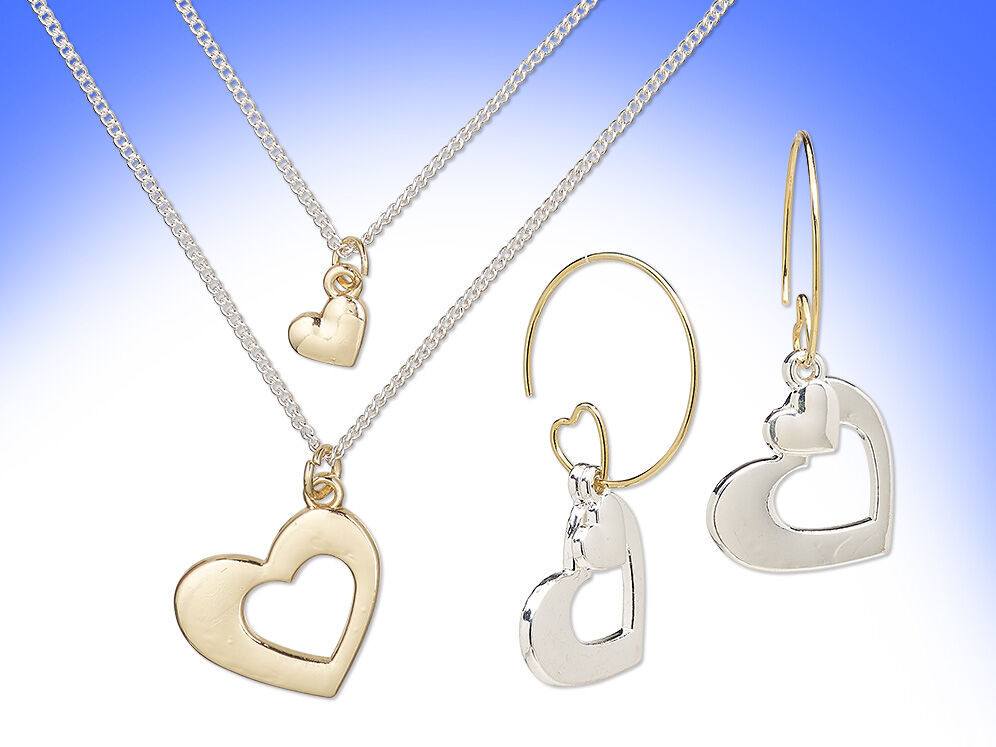
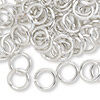
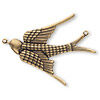
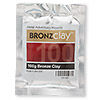
.jpg)
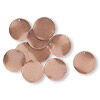
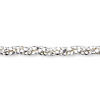
.jpg)

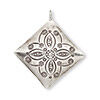
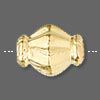
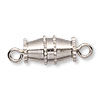
 (1).jpg)
